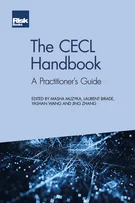The Impact of Margin on Regulatory Capital
Introduction
Variation and Initial Margin in the ISDA Credit Support Annex
Variation and Initial Margin Required by Central Counterparty Clearing Houses
Margin Requirements for Over-the-Counter Derivatives: A Supervisory Perspective
The Emergence and Concepts of the SIMM Methodology
The ISDA Standard Initial Margin Model Backtesting Framework
The Impact of Margin on Regulatory Capital
XVA for Margined Trading Positions
Modelling Forward Initial Margin Requirements for Bilateral Trading
Forward Valuation of Initial Margin in Exposure and Funding Calculations
Margin Value Adjustment for CCPs with Q-Simulated Initial Margin
Bilateral Exposure in the Presence of Margin
Central Counterparty Risk
Robust Computation of XVA Metrics for Central Counterparty Clearing Houses
Efficient Initial Margin Optimisation
Procyclicality in Sensitivity-Based Margin Requirements
Systemic Risks in Central Counterparty Clearing House Networks
6.1 INTRODUCTION
The Basel Committee on Banking Supervision and International Organization of Securities Commissions (BCBS–IOSCO) uncleared margin requirements (UMR; often referred to in the industry as the “uncleared margin rules”), discussed in Chapter 3 of this volume, have dramatically changed the landscape of bilateral over-the-counter (OTC) derivatives trading. Banks now have to post significant amounts of initial margin (IM) when trading bilaterally with large financial institutions. The IM that a bank’s trading desks have to post results in substantial funding costs for the trading desks, known as a margin valuation adjustment (MVA). On the other hand, as discussed in great detail in Chapter 11, margin posting dramatically reduces a bank’s potential claim amount in the event of a counterparty default, known as credit exposure, leading to a reduction in the price of the counterparty risk, known as credit value adjustment (CVA). MVA, CVA and the trade-off between these two costs are discussed in Chapter 7.
The quantification of exposures and the risks associated with them can take many forms. In a capital context, one of the most widespread quantitative measures of risk
Copyright Infopro Digital Limited. All rights reserved.
You may share this content using our article tools. Printing this content is for the sole use of the Authorised User (named subscriber), as outlined in our terms and conditions - https://www.infopro-insight.com/terms-conditions/insight-subscriptions/
If you would like to purchase additional rights please email info@risk.net
Copyright Infopro Digital Limited. All rights reserved.
You may share this content using our article tools. Copying this content is for the sole use of the Authorised User (named subscriber), as outlined in our terms and conditions - https://www.infopro-insight.com/terms-conditions/insight-subscriptions/
If you would like to purchase additional rights please email info@risk.net





